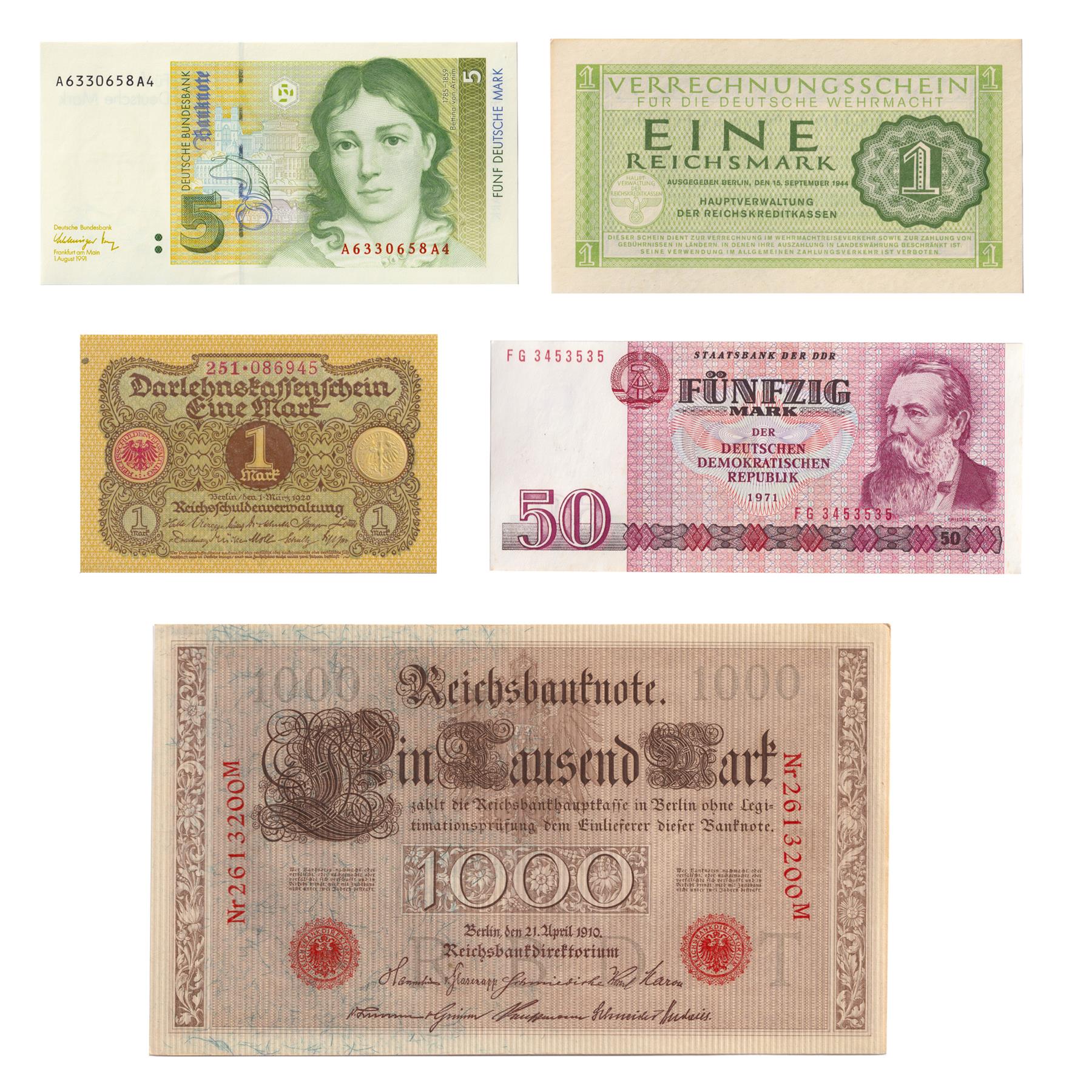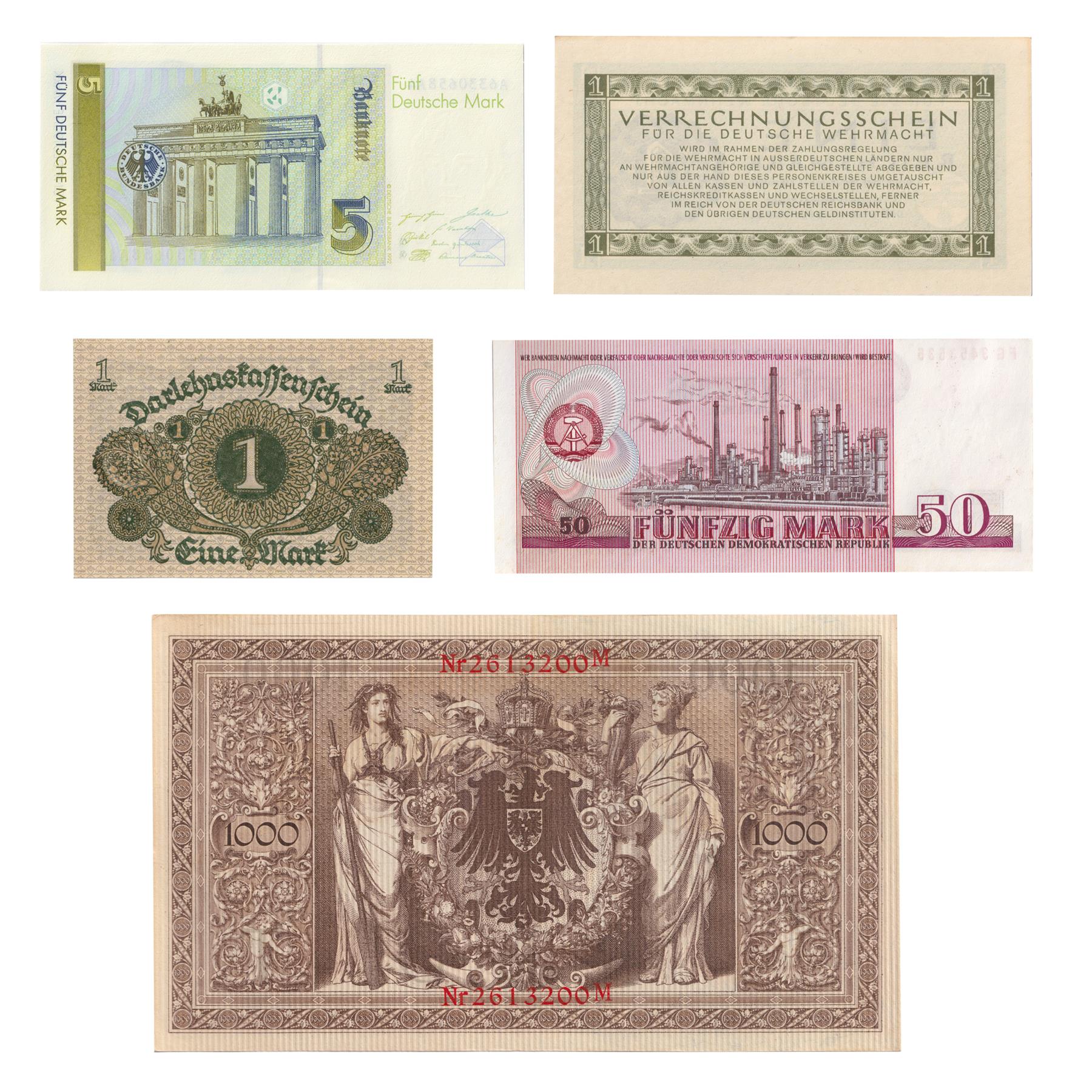Country/Countries: Weimar Republic, Third Reich, Federal Republic, Democratic Republic, German Empire
Number of banknotes: 5
Year: 1910 - 1991
Collection: History of German currency
Catalog numbers: 58, M38, 37, 30, 44
Package type: Envelope
Package width: 13.5
Cleaned/Uncleaned: Uncleaned
Circulated/Uncirculated: Uncirculated
Metal compositions: Paper
Denomination: 1 Mark, 1 Reichsmark, 5 Mark, 50 Mark, 1000 Mark
Type: Banknotes
Weight: 19 g.
🖊 Writers: Bettina von Arnim
🧠 Philosophers: Friedrich Engels
⛩ Monuments: Brandenburg Gate in Berlin
({IF["„Darlehenskassenscheine“ were banknotes issued between 1914 and 1922 by the Reichsschuldenverwaltung (Reich debt administration). They were in use until the hyperinflation in 1923.
These banknotes were not legal tender, however they had to be accepted by all public treasuries. Their value was guaranteed by loans on industrial and agricultural goods. Even without the status as legal tender Darlehenskassenscheine were a de facto currency widely used as a parallel currency to the Goldmark during WWI and the beginning of the Weimar Republic."!=""]}) 🔍 Interesting information: „Darlehenskassenscheine“ were banknotes issued between 1914 and 1922 by the Reichsschuldenverwaltung (Reich debt administration). They were in use until the hyperinflation in 1923.
These banknotes were not legal tender, however they had to be accepted by all public treasuries. Their value was guaranteed by loans on industrial and agricultural goods. Even without the status as legal tender Darlehenskassenscheine were a de facto currency widely used as a parallel currency to the Goldmark during WWI and the beginning of the Weimar Republic. ({ENDIF})
🔎 Interesting information: 1 Reichsmark were used only in Deutsche Wehrmacht
🔦 Interesting information: The Mark of the German Empire also known as ‘Goldmark’, was the national currency of the German Empire from 1871 until 1914. The Mark was part of the ‘golden standard’ monetary system. The value of one mark was fixed to the value of 0.358 grams of gold.




